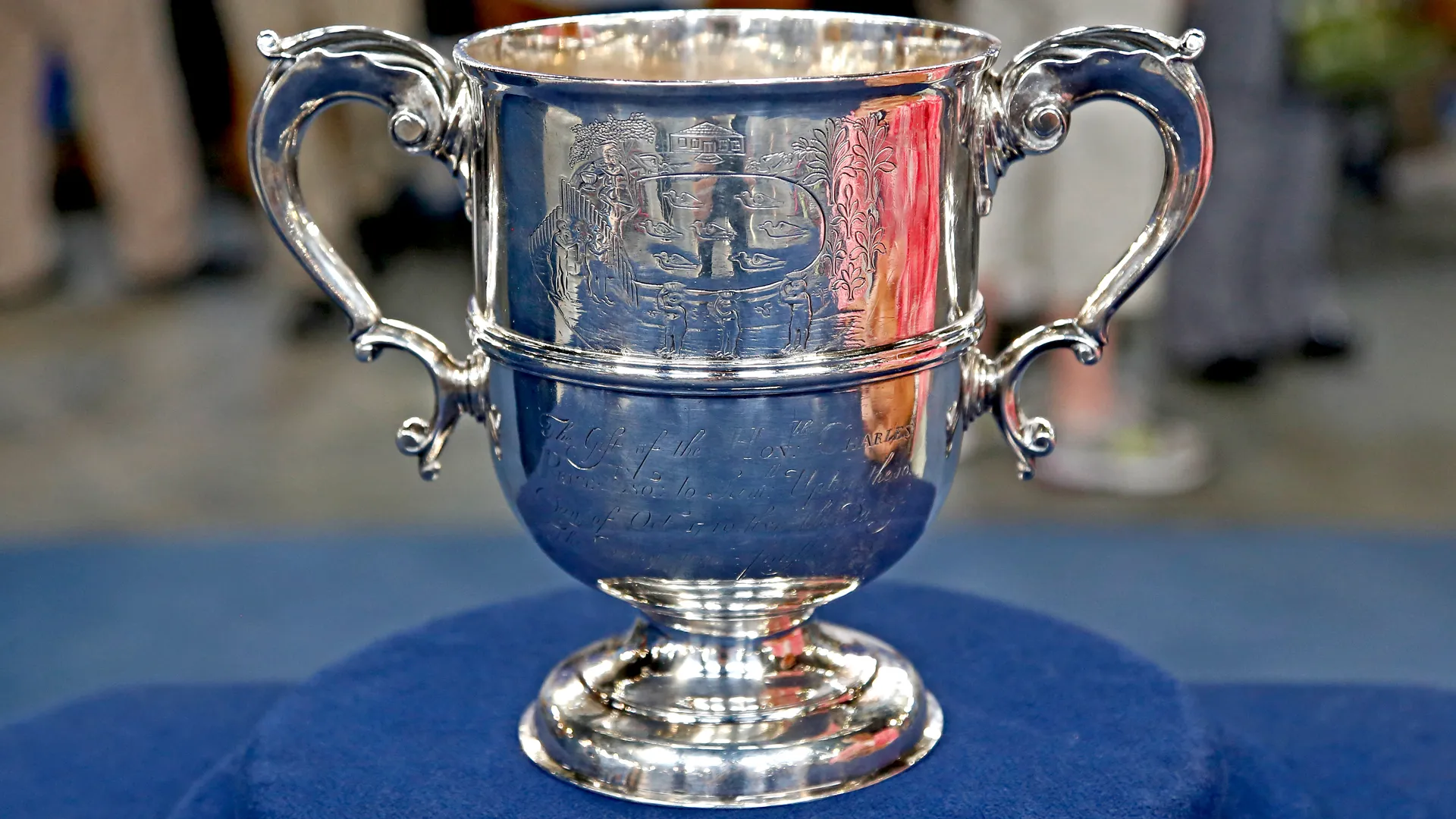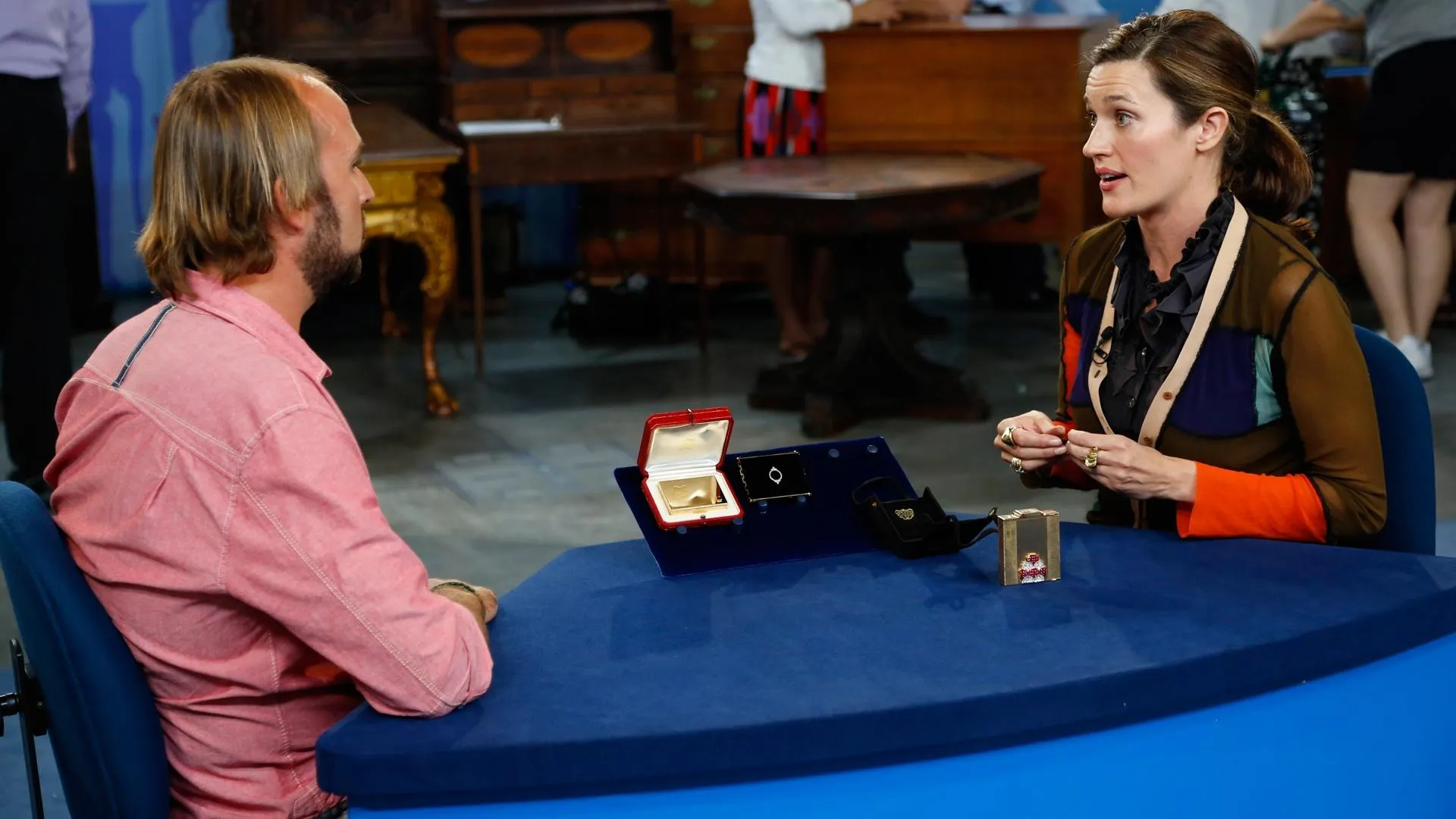GUEST: This belongs to my husband and it was from his grandparents. His grandmother liked to buy lots of things. So we don't know if this is further back, or if it's something she bought.
APPRAISER: Okay, and where's your husband from?
GUEST: He's from Scotland. He was born in Rait, Scotland. And his grandparents were from Dundee, Scotland.
APPRAISER: Okay, and did they stay in Dundee, or did they...
GUEST: Yes, yes.
APPRAISER: Okay. It's made in Jamaica.
GUEST: No!
APPRAISER: It's a piece of Jamaican silver, yeah. And the way we know that is by looking at the inscription on the front. It's quite faded, but it's written, "The gift of the Honorable Charles Price Esquire to Samuel Upton, the tenth day of October, 1740." And it has an interesting allusion to what happened. It says, "That day was the completion of the dam of the Decoy." And that's written below this scene we have above it, which is presumably his home in Jamaica, and then a big pond with lots of birds in it, and then these sort of African slave workers in front of them. Charles Price is very well known in the history of Jamaica. He was speaker of the House of Assembly in Jamaica, he was later chief of the militia, the arms of the militia. So he's a man of some stature. In 1730 he inherited three estates from his father. Quite how this cup ties in, what happened I'm not exactly sure. We'd need to research it a little bit more.
GUEST: Right, right.
APPRAISER: But it is very, very interesting that it has his name on it. And if you notice his name is actually written in very large letters, and it's written, "The honorable Charles Price Esquire," and then Samuel Upton is just contracted "Sam L. Upton."
GUEST: Right, right.
APPRAISER: Which makes it kind of known that Price is the man here that's worth noting. The maker's mark on this piece is here. And with a lot of colonial silver, a lot of West Indian silver, they're not always easy to trace. The marks predate the Jamaican silver marking system, which came in 1747. They use an alligator in 1747 onwards. So the fact that it doesn't bear those marks is also in keeping with silver of this period from this place. All pieces of Jamaican silver from this period, 1740 thereabouts, are very rare. And there is a very strong market for them. There just aren't that many around. I would have no hesitation in estimating this at auction for between $20,000 and $30,000.
GUEST: Oh, my gosh. Oh, my gosh. Thank you.













